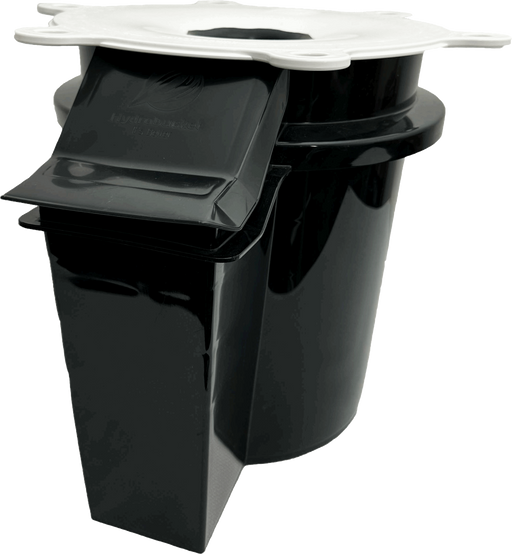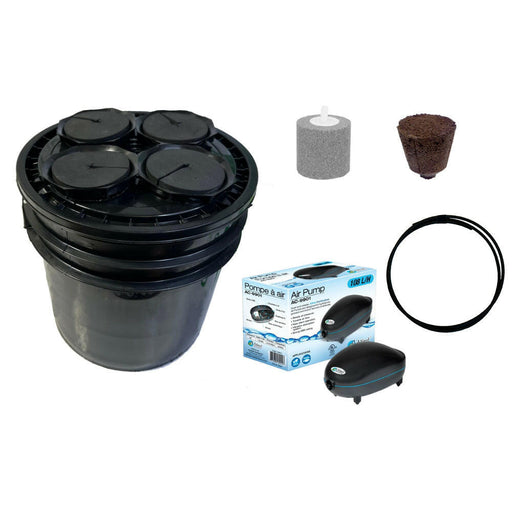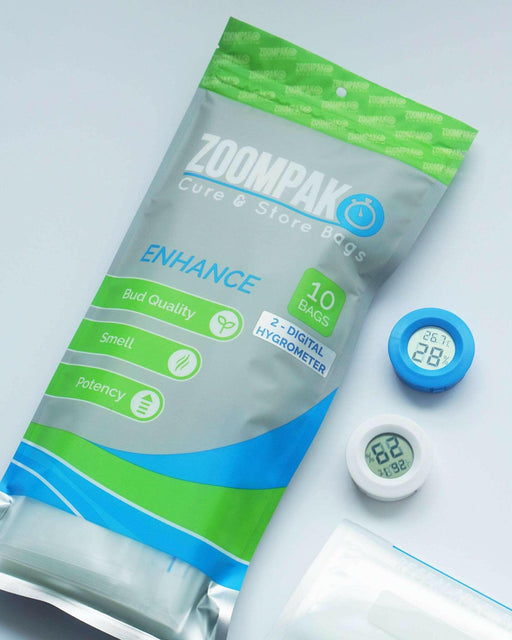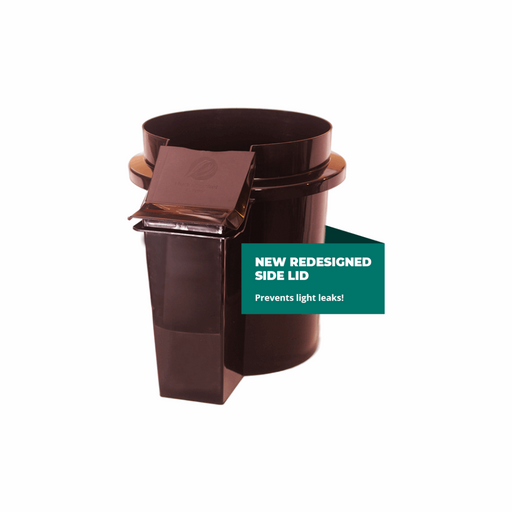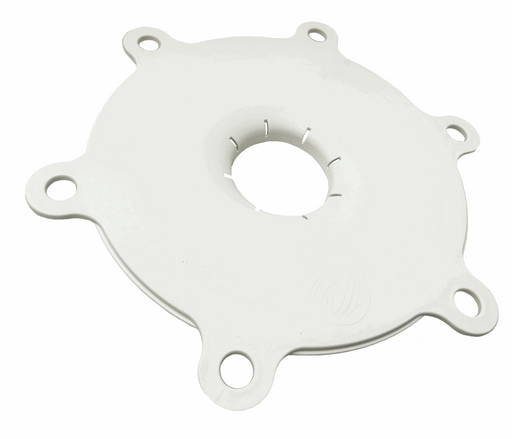
DWC Healthy Roots
How to Manage and Keep Root Health Optimal in Deep Water Culture
In DWC healthy roots are stimulated and maintained easily because Deep Water Culture (DWC) methods provide a continuous supply of aeration and oxygen to plant roots. This is the job of your air pump, lines and airstones. Most varieties of plants commonly grown thrive in these conditions, which are said to be “aerobic” (with air). Anaerobic conditions (poor aeration or oxygen levels) tend to favour root disease causing organisms, ie things that can lead to root rot or stem rot in your hydroponic plants.
While with DWC healthy roots are the “norm” there are some things to be aware of that can cause issues for what would otherwise be a healthy root system. Maintaining healthy roots in DWC is important to ensure maximum crop production because plants can easily absorb water, minerals and oxygen. When root health is poor, plants may have a limited ability to absorb these critical elements, leading to stresses on the crop and potentially lowered production or growth rates.
Here are some symptoms that root health may not be optimal in your DWC set up; which are best diagnosed and treated early–take advantage of that side lid cover on your HydroBucket and inspect roots with regularity.
Biofilms–watch for slimy substances that are building up on the sides of the bucket, hydropod or roots that are directly above the surface of the nutrient solutions. This is often where problems start. Biofilms in DWC can compete with roots for oxygen and nutrients; or may simply smother the roots and begin rotting them.
Discoloured, soft root systems–this isn’t good. Sometimes roots may naturally appear to be off-white due to the nature of the plant or some of the dyes or components in your nutrient solution. A light tan colour may be normal and OK, especially if the roots are firm. If the roots appear mushy and smell strongly of potatoes or decomposition, it’s a good bet you have infected roots.
pH keeps rising or lowering dramatically-if the nutrients you are using are typically stable in pH and wide daily swings are occurring, this can be a symptom of root infection. It’s perfectly normal for the pH to rise a few decimal points daily, especially with heavy feeding crops. With severe root infections, the need to constantly adjust the pH compounds problems in the root zone by disrupting the ionic balance of nutrients.
Observing an unusual amount of organic sediment–if you see a lot of organic sediment in the bottom of your buckets during nutrient changes, make sure to inspect the roots and note the root conditions carefully. It’s normal to see some organic sediment because roots are like your skin; they shed and grow new layers all the time; too much is a sign that something is wrong, however.
Sharp drops in ORP levels–ORP (oxidation reduction potential) is a diagnostic that is typically used by more advanced growers. This value represents the hygienic qualities of source water and nutrient solutions.
How to Avoid Problems in DWC
The above problems are best avoided (but don’t worry we’ll talk about some remedies too in a bit here). The following are pillars of DWC healthy roots:
Clean Nutrients:
It’s best to use mineral based nutrient solutions that are intended for hydroponic growing. Organic nutrients or fertilizers intended for outdoor gardens are not made of the same ingredients or supplied in ratios that are well balanced for growing in water (vs soil). It is strongly recommended that you DO NOT add nutrients, supplements, etc that contain organic materials–these will lead to biofilms or may create other imbalances or issues in your DWC nutrient solution and root system.
Clean Source Water:
Some water sources may not be well suited to deep water culture growing because they contain impurities that are disruptive to healthy water chemistry. For example sediments, bacteria, metals and unacceptable levels of dissolved solids are common issues. Well water can be especially problematic. If your water supply is 250 ppm (parts per million) or less, you should be OK. A sediment and carbon filter are ALWAYS a good idea before adding water to your bucket system RO Filtered water is ideal (0-10 ppm water)

Healthy Nutrient Solution Temperature:
In natural settings, roots are often kept cooler in the soil versus above ground air temperatures. DWC roots will however tolerate warmer conditions provided that the solution is well aerated, the water is clean and free of harmful impurities and clean fertilizer sources are used at recommended dosage rates with a balanced pH being maintained. However, there are limits. Roots that never get a chance to cool down, for example at night or during the dark cycle may be prone to problems.
Treating & Maintaining DWC Healthy Roots
Here’s some things you can do to help improve the situation for any root systems showing signs of stress or rots, etc as described above.
More frequent nutrient change-outs, this will help reduce the stress load that is on the root system and help remove decomposing organic matter.
Manage or Dose for improved ORP levels–hypochlorous acid (UC Roots, etc) or hydrogen peroxide are effective ways to maintain a more hygienic root environment and impede the development and spread of root disease. Use as directed on the label for hydroponic purposes.
Add a Bio-Fungicide–there are highly specific forms of fungi that may be of benefit to DWC root systems, particularly if showing signs of infection. Make sure you do your research and choose carefully. These are typically not inexpensive although highly effective when applied correctly.
Root pruning and washing–severely infected roots should be trimmed away; they are not helping anything, rather, they are spreading the issue. Root systems can also be “cleansed” with a stream of fresh water to wash away any gunk or soft decaying roots—make sure this goes down a drain and does not stay in the bucket!
Back off on the growing environment–if roots are showing signs of stress or infection, they may not be able to keep up with the demands of the plant based on the intensity of the growing environment. Reducing light levels is a great place to start, especially if the nutrient solution has been overheating. This will usually mean that ventilation levels can be reduced, so plants aren’t losing as much water when they can’t easily keep up. Once root health improves, begin gradually ramping up the growing environment again.
Start Indoor Growing Today!
-
HydroCombo
Visionary HydroponicsOriginal price $76.45Original price $76.45 - Original price $76.45Original price $76.45Current price $57.34$57.34 - $57.34Current price $57.34Maximize your hydroponic gardening efficiency with the HydroCombo, an all-in-one solution for your Deep Water Culture needs. This high-quality comb...
View full detailsOriginal price $76.45Original price $76.45 - Original price $76.45Original price $76.45Current price $57.34$57.34 - $57.34Current price $57.34Sold out -
HydroSeed
Visionary HydroponicsOriginal price $62.98Original price $62.98 - Original price $62.98Original price $62.98Current price $47.23$47.23 - $47.23Current price $47.23Simplify Starting Your Hydroponics Seedlings Introducing the HydroSeed, our all-in-one solution to go from seed to harvest effortlessly, and cultiv...
View full detailsOriginal price $62.98Original price $62.98 - Original price $62.98Original price $62.98Current price $47.23$47.23 - $47.23Current price $47.23Save 25% -
ZoomPak Cure & Store 1/2lb Bags
Visionary HydroponicsOriginal price $39.96Original price $39.96 - Original price $39.96Original price $39.96Current price $29.97$29.97 - $29.97Current price $29.97ZoomPak Cure & Store 1/2lb Bags - 10 Pack The ZoomPak Cure & Store Bags are designed for the discerning horticulturist seeking to pre...
View full detailsOriginal price $39.96Original price $39.96 - Original price $39.96Original price $39.96Current price $29.97$29.97 - $29.97Current price $29.97Save 25% -
HydroBucket
Visionary HydroponicsOriginal price $39.74Original price $39.74 - Original price $39.74Original price $39.74Current price $29.08$29.08 - $29.08Current price $29.08HydroBucket is the answer to your Deep Water Culture hydroponics needs.It streamlines your home growing experience, allowing you to focus on nurtur...
View full detailsOriginal price $39.74Original price $39.74 - Original price $39.74Original price $39.74Current price $29.08$29.08 - $29.08Current price $29.08Save 27% -
HydroLid
Visionary HydroponicsOriginal price $35.95Original price $35.95 - Original price $35.95Original price $35.95Current price $26.96$26.96 - $26.96Current price $26.96Premium Quality Hydroponic Lid for Optimal Fluid Movement and Plant Support The HydroLid is your essential tool for achieving optimal hydroponic gr...
View full detailsOriginal price $35.95Original price $35.95 - Original price $35.95Original price $35.95Current price $26.96$26.96 - $26.96Current price $26.96Sold out

